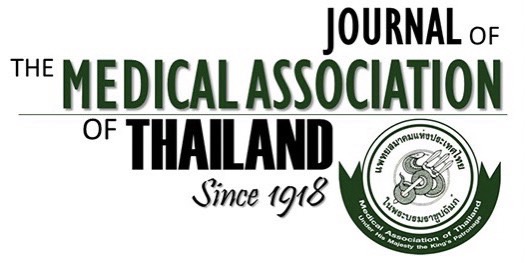Isolation and Antibiotic Susceptibility Profile of Salmonella spp. from Patients in a Tertiary Care Hospital in Thailand
Piriyaporn Chongtrakool¹, Preeyanuch Wangleotsakulchai², Tippavan Tabboon², Huttaya Thuncharoon², Chalermsri Pummangura³, Dararat Samretwit³, Thitiya Yungyuen¹, Premwadee Khowwigkai¹, Tanate Suttisaewan⁴, Somporn Srifuengfung³
Affiliation : ¹ Faculty of Medicine Siriraj Hospital, Mahidol University, Bangkok, Thailand; ² Microbiology Laboratory, Taksin Hospital, Bangkok, Thailand; ³ Faculty of Pharmacy, Siam University, Bangkok, Thailand; ⁴ Saimai Hospital, Bangkok, Thailand
Objective: The impact of COVID-19 on the number and antibiogram profile of Salmonella was studied between January 2018 and December 2021. The present time period included years before the COVID-19 pandemic, which are 2018 and 2019, and during the pandemic, which are 2020 and 2021.
Materials and Methods: Salmonella infections were classified into eight distinct serogroups using slide agglutination with specific antisera (A, B, C, D, E, F, G, and I). The susceptibility to antimicrobial agents were evaluated by the standard disk diffusion method.
Results: Four hundred fifty-one isolates were detected (139 in 2018, 119 in 2019, 102 in 2021, and 91 in 2021). Salmonella infection decreased by 25.2% from 258 isolates in 2018 and 2019 to 193 in 2020 and 2021. When comparing Salmonella infections in different age groups (0 to 10, 11 to 20, 21 to 30, 31 to 40, 41 to 50, 51 to 60, 61 to 70, and older than 70 years), before and during COVID-19, statistical significance was noted only in patients aged 11 to 20 (p=0.016). For clinical specimens (stool, blood, urine, pus, etc.), statistical significance was found only in blood specimens (p=0.036). The four most predominant Salmonella serogroups were B (31.1%), C (30.6%), E (15.7%), and D (11.4%). S. Typhi was present in 2.1% (4/193) of Salmonella isolates during COVID-19. The findings of a susceptibility test using the disk diffusion method for four commonly used drugs in treatment of severe salmonellosis as ampicillin, cefotaxime, ciprofloxacin, trimethoprim/sulfamethoxazole, before and during COVID-19 demonstrated statistical significance only in Salmonella serogroup D (p=0.028). Overall, drug susceptibility of Salmonella serogroup B, C, D, and E was ampicillin (range 15.1% to 55.9%), cefotaxime (range 66.7% to 100%), ciprofloxacin (range 18.8% to 59.1%), and trimethoprim/sulfamethoxazole (range 70.0% to 93.8%).
Conclusion: The present study results suggested the importance of monitoring the prevalence of Salmonella at a hospital in Bangkok. The antibiogram of susceptibility helps provide guidelines for clinician to consider empirical treatment.
Received 10 October 2022 | Revised 4 December 2022 | Accepted 14 December 2022
DOI: 10.35755/jmedassocthai.2023.02.13784
Keywords : Salmonella; COVID-19 pandemic; Thailand



